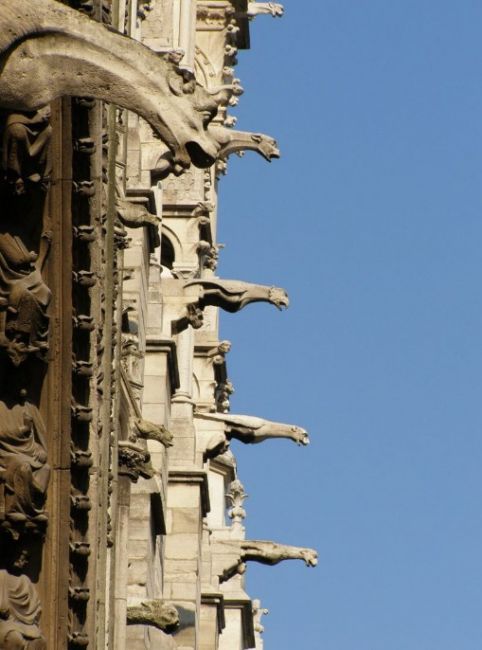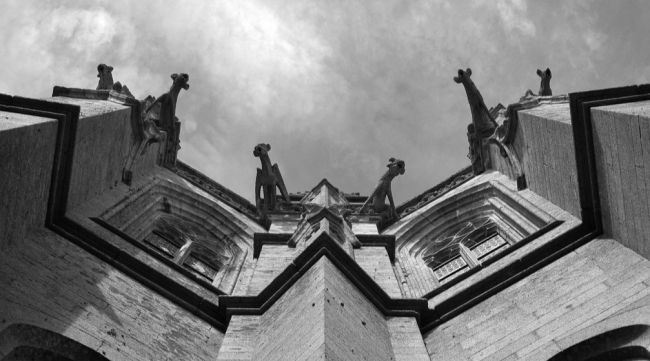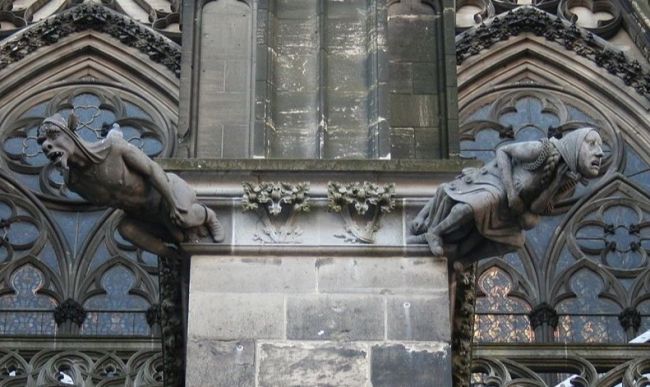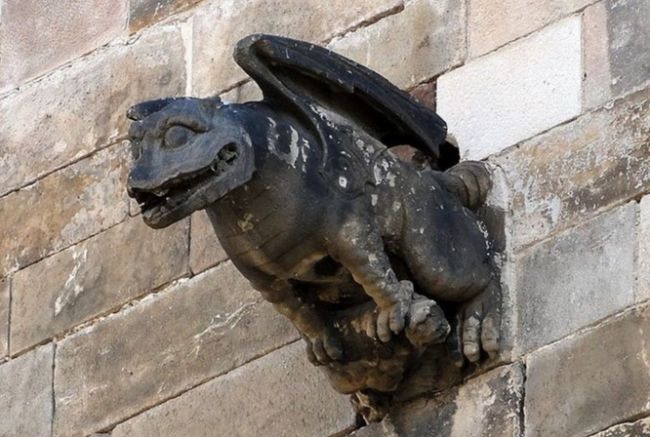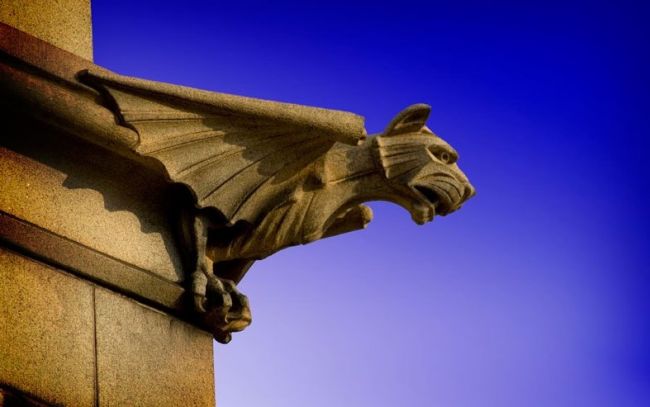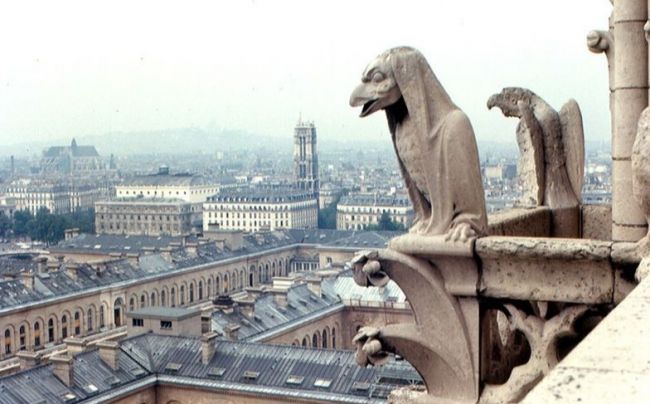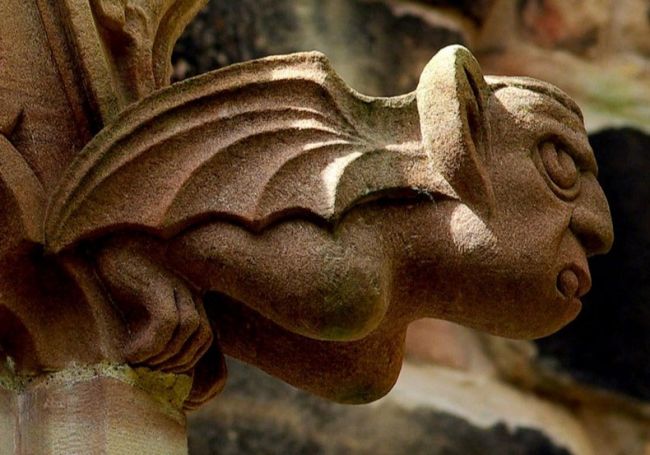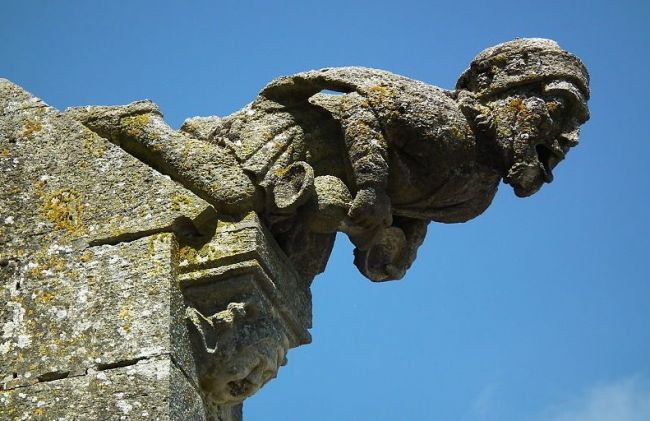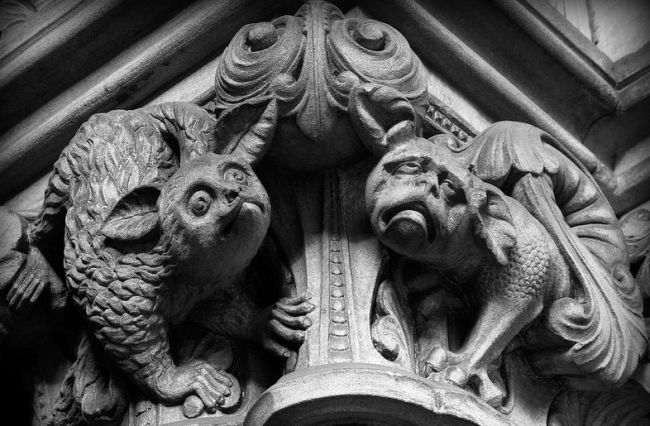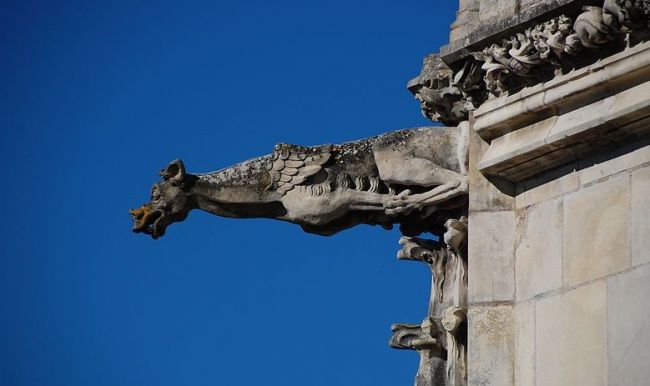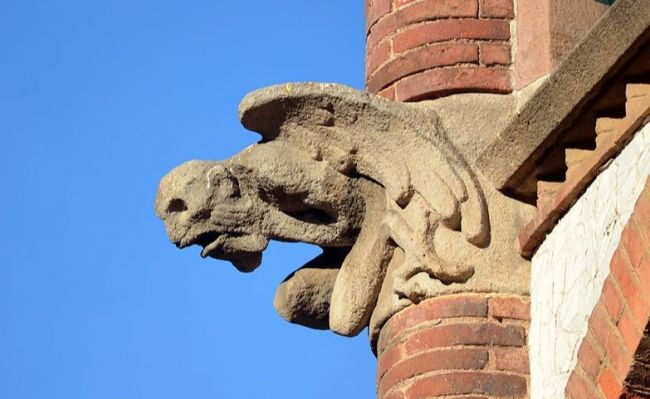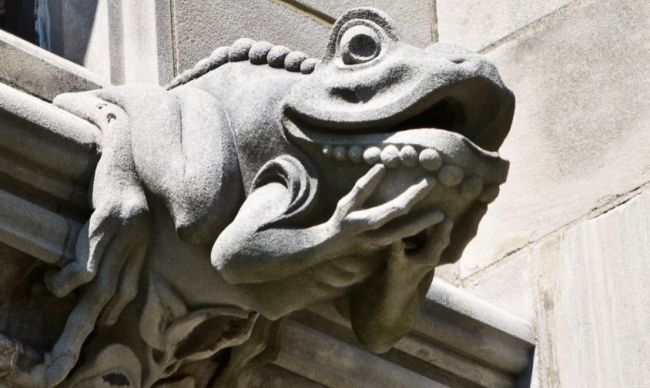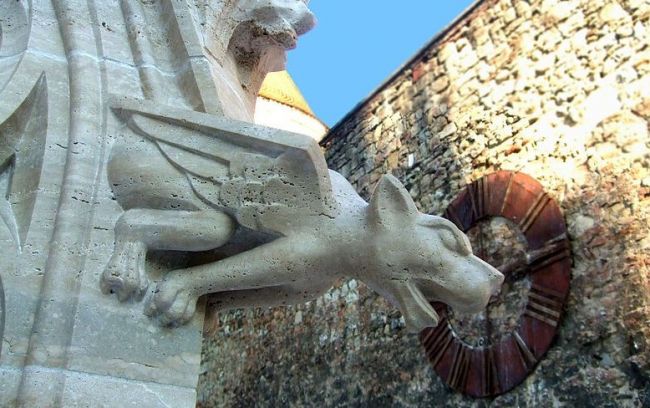The History of Gargoyles – Gargoyles are numbers commonly carved into the design of old churches, typically in the form of a monstrous animal or human.
Lot of times gargoyles in Gothic churches were attached to the seamless gutter system of the roofing, with the mouth of the gargoyle functioning as a spout for rain, aiding keep the masonry from being ruined.
What is the origin as well as significance of gargoyle?
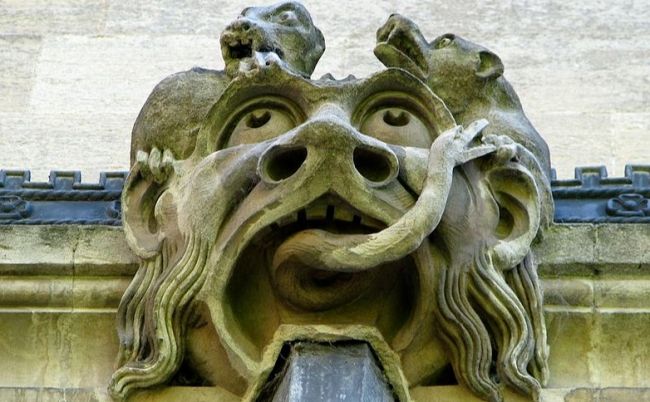
Catholic churches in the Middle Ages used gargoyles for a second objective, after drawing away water from the church wall surfaces. Some think gargoyles on a church were meant to fend off evil; it’s additionally possible that the gargoyles signified fiends, inhuman entities, and damned hearts.
The reasoning was that the church offered spiritual security for those that approved its authority, yet outside the church was spiritual risk. The gargoyles were therefore an alerting to the populace that it was better to be inside the church compared to outdoors.
It’s additionally feasible that the believing behind gargoyles was to produce a symbolic depiction of heck; again, the beyond the church was contrasted with the in. Yet gargoyles go back to pre-Christian times. Among the earliest instances of gargoyles is a collection of lion-shaped water spouts built into the side of the holy place of Zeus in Olympia, Greece. Ancient Egyptian architecture additionally flaunts gargoyles, most of these additionally formed as lions.
Gargoyles are never ever discussed in the Bible. Demons are in some cases represented as looking rather like gargoyles, but it is not likely that demons would certainly take on such a kind, considering their goal of tricking individuals right into thinking them to be angels of light (2 Corinthians 11:14).
Simply put, the Scriptures gives us no reason to believe that any being looking like a gargoyle exists. Gargoyles are absolutely extra interesting compared to undecorated rainspouts, and also the meaning behind them is interesting. Yet spiritual safety and security is not discovered inside a building or in a works-based religious beliefs; it is found just in Christ (Proverbs 18:10; 2 Samuel 22:3; Psalm 91:2).
The History of Gargoyles
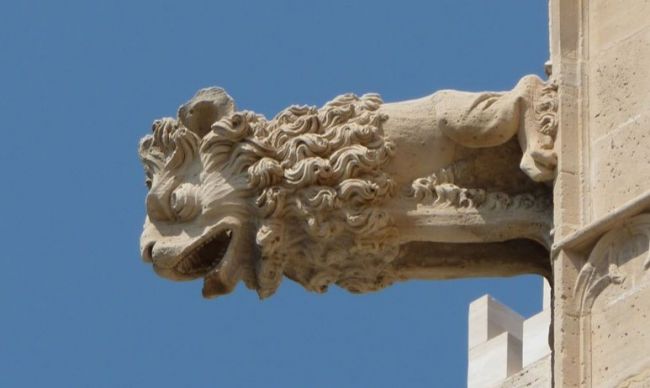
Gargoyles came from someplace between the 11th and the 13th Centuries. They offered 2 objectives – to frighten wicked, and to draw away rain. Lots of have open mouths because they additionally functioned downspouts to draw away rain from foundations.
Therefore, a lot of the very early Gargoyles likewise had rather lengthy necks. The word “Gargoyle” stems from the old French word “Gargouille” meaning “Throat” but which likewise fairly well defines the gurgling sound of water coming with the downspout.
The Catholic Church originally used Gargoyles as a visual reminder to their Pagan converts, many of which were illiterate. They were something of a “lecture in rock”, or a caution of sorts to instruct individuals how to act in a non-written way. They are currently practically ornamental as well as think several types.
Many gargoyles are monstrous, yet stone carvers in the past also honored relatives as well as pals by carving their faces right into them. As they progressed, they morphed right into usually very fancy sculpture.
As Gargoyles developed, they came to be icons of kinds, utilizing reoccuring styles, primarily pertaining to Paganism. The 5 standard teams are listed here:
- Faces with numerous smaller figures and also one big figure, or one number with mouth agape and sticking out tongue: Represents the insignificance of the specific as well as exactly how prone we are to bigger powers.
- Separated heads: A real practice of the Celts, who were head seekers. They venerated the heads they severed and also believed these heads held supernatural powers.
- Unclear sex and also types: Specimens once more date back to the Pagans. The Pagan religious beliefs existed to overcome chaos and danger. These Gargoyles are depictive of the fear of the unknown. This type of Gargoyle is currently called “Grotesque.”.
- Head laced with branches as well as leaves: A branch coming out of the mouth or surrounding the head suggested divinity to the Celts. The Druids typically illustrated oak leaves, as the oak was spiritual to them. This is often described as the “Eco-friendly Man” today.
- Sexual Themes: Made Use Of by the Pagan religious beliefs as symbols of fertility. If utilized on outside wall surfaces, they were thought to dissuade wickedness. Once again, we return to the global anxiety of sexuality that exists even today.
A Natural History of Gargoyles

What are these wonderful monsters carrying out in the cloisters under the very eyes of the siblings as they read? … Exactly what is the meaning of these dirty monkeys, these vicious lions and also impressive creatures?”.
It was a fitting inquiry St. Bernard presented in asking exactly how and why these “dirty apes” – these gargoyles as well as grotesques – came to live in male’s monoliths to God and also past. Seek out in the concentric center of community in practically any old city today as well as satisfy the stare of these problems overhead.
Exactly how does one integrate the anonymous, hallucinatory photos – much of which are efficiently concealed from view in remote recesses of their towers – with the sacrosanct goal of the Church and the mathematical accuracy of Gothic architecture? How did they take a trip from country to nation, emerging like lumps on structures throughout Europe as well as, a lot later on, The U.S.A.? They are not to be explained away as mere attractive whimsy.
While no ancient messages exist that describe the meaning of these weird animals, we do know that craftsmens as far back as the Bronze Age utilized the monstrous – in gorgons, griffins and sphinxes, as an example – to avoid the powers of evil.
As a matter of fact, the Italian word “grotteschi” – stemmed from “grotto,” Latin for “cavern” – was created throughout the excavations of underground Roman ruins which 15th-Century archaeologists misinterpreted for old caverns.
The mythological animals located in the ruins of Nero’s “Golden House,” for example, are the direct ancestors of those the Transparanoia Brothers have landed for you pleasure. Maybe middle ages guy felt he could prevent wicked pressures by presenting a just as effective array of bad stamina. Or do the sanctuary carvings sculpturally stand for the stony imprisonment of Satan’s underlings in the act of besieging the Church?
One informing story related by the Bros., using middle ages villagers, worries a 7th-Century dragon called “La Gargouille,” who would rise from his cavern near the river Seine to ingest ships as well as ruin close-by communities.
To calm him, the citizens of Rouen would compromise a found guilty to La Gargouille every year and also hope for the very best. Someday, a take on priest checking out Rouen used to suppress the monster if, in exchange, the people of the community would develop a church in his honor and agree to be baptized.
The townsfolk agreed, as well as the priest was able toleash the dragon as well as bring him to the center of community to be burned at the risk (possibly the identical one the enjoyable- caring Rouenians used to dispatch Joan of Arc some years later on).
Only the dragon’s head as well as neck would not shed, inured as they were to their proprietor’s incendiary breath. It is most likely based on this tale that the heads and necks of inhuman creatures came to be popular concepts for middle ages rainspouts, which is exactly what is technically meant by the term “gargoyle.”
The rainspouts shot greater than just rainfall nevertheless; simply picture the day-to-day sewage barfed by a gurning gargoyle. A middle ages citizen would certainly do well to avoid these creatures.
Yet the desire to ward off evil can not on its own account for the appeal of gargoyles in the Middle Ages. Such unthreatening motifs as comely mermaids and also studious monks prevailed, and they might rarely be anticipated to strike horror in the generate of Satan.
Much more importantly, an excellent number of the dreadful samplings show up inside the sacred area of the church, which, in terms of dispersing evil, is akin to positioning a mousetrap inside a wheel of cheese.
Go into historians TK Sheridan and Ann Ross, who in 1969 published an impressive concept. The terrific bulk of gargoyles and also grotesques in Gothic architecture, they observed, are patterned after pre-Christian deities which may still have put in a solid thrall over individuals of the Center Ages.
As a contemporary instance of the sort of situation they defined, they pointed out the wealth of pre-Christian imagery that exists in Christian churches throughout South The U.S.A.. Equally as religious routine there betrays the undeniable influence of the duration before the Spanish occupation, so do the grotesques of the Gothic basilica indicate the worship of pagan idols in the middle ages Home of God.
The impact Sheridan and Ross differentiate in the Gothic iconography of the Center Ages is that of the Celts, whose realm in the centuries just before the birth of Christ stretched across exactly what is now Western Europe.
The gargoyles and grotesques of the Center Ages, they recommend, are essentially Celtic deities whose tales were given through oral folkways and whose likenesses stayed amulets of good luck as well as protection. The Church, identifying the unfeasibility of totally supplanting such a rich religious custom, tolerated the photos with uncharacteristic tact and forbearance.
A physical contrast of some typical gargoyle imagery with the personalities of Celtic worship bears a lot of this concept out. The preponderance of heads in church grotesques could be mapped to the Celts, that severed the heads of their adversaries in battle and worshipped the head as a database of divine power.
Specifically, the popular photo of the head embedded in vegetation or with greenery spewing from its mouth harks back to a topic of Celtic prayer known as “Jack o’ the Environment-friendly,” or “the Green Man,” that was thought to promote growth and also fertility.
Tree praise generally was a Celtic dedication which continued to influence cults well right into the Christian era, much to the pain of the Church. The combination of head as well as tree images, which must have been tolerated by spiritual leaders to show up in a lot of gargoyles of the day, could well have confirmed also effective a pagan picture for spiritual officials to objection.
Other depictions of ancient, pre-Christian gods in the rock makings of middle ages churches consist of a series of prominent horned figures that, for the Celts, symbolized fertility, prosperity and prowess in battle, and also whose antecedents day at least as much back as the horned gods of the classic Roman globe.
By the Dark Ages, the horned figures had taken on the connotations of the Anti-Christ – their stone encounters fashioned right into a range of gruesome attitudes to maintain their bad brethren away. Definitely there are those scriptural literists today that still view Satan as a horned number participated in pitched battle for their souls.
Giants, attacking animals and numbers with extending genitals other startling concepts not unusual to the basilica habitation. Giants and also various other fierce monsters will typically be seen devouring men whole, or clutching their heads in fearful talons – pictures which represent the demand for guy’s mindfulness of the dark spiritual forces waiting to ensnare him. The biting animals – who are depicted taking in those really rocks sustaining their ensconcement high above the ground – are maybe implied to recall those forces which eat away at the fabric of the church.
Gargoyles with blatantly exposed genitalia, while signifying fertility, have the sharp, hostile appearance shared by the multitude of grotesques with sticking out tongues and protruding eyes; all of these are most likely to have actually recommended to the members the relevance of constant watchfulness against the encroachment of fatality and also devastation.
Nevertheless we interpret the significance of the gargoyles and grotesques which occupy the churches as well as structures of the western world, it is quite clear that their relevance to the medieval population went well past the totally decorative or practical.
They were, effectively, the representations in stone of a collective unconscious that gone beyond generational and national boundaries. Even in the darkest recess at the loftiest height, one can still discover oneself face to face with the secret uncertainty or innermost concern of medieval males and females.
Probably due to the fact that they shared these half-remembered beliefs, the Church elders tolerated this surreal rock terrarium and therefore helped preserve its abundant, odd heritage to an impressive level.
The winding down of the Middle Ages brought with it the end of the torment, more explorations about the environment, and an erosion of pagan beliefs. As life ended up being much more safe and secure, the grotesques became much less fearful, more reflective as well as whimsical – several of the a lot more current faces showing up in this book were possibly based on good friends of the carvers or, in the case of the uglier ones, extremely demanding foremen.
Yet hundreds of years after the advancement of lead drains provided gargoyles practical metachronisms, stone grotesques were still being statued and secured into the masonry of structures throughout Europe and the New World. Our spiritual attack dog were still on the instance.
Today, of what feels like the very first time, individuals are searching for and also noticing these anonymous sentries airborne, asking exactly how and also why they started their centuries-old watch. Ironically, the only substantial threat to the denizens of this remarkable stone jungle comes from the very varieties they were implied to supervise. The fumes we send up into the ether from our vehicles as well as smokestacks come back down in acid rains as well as hazes that gnaw at the creatures’ sedimentary rock visages, transforming also one of the most innocuous expression right into a tortured palsy prior to dissolving it totally. These mysterious chimeras bequeathed to us numerous centuries back by our medieval brethren currently stand to be worn down in one.
Gargoyle, Gothic Design and also the Gothic Arc
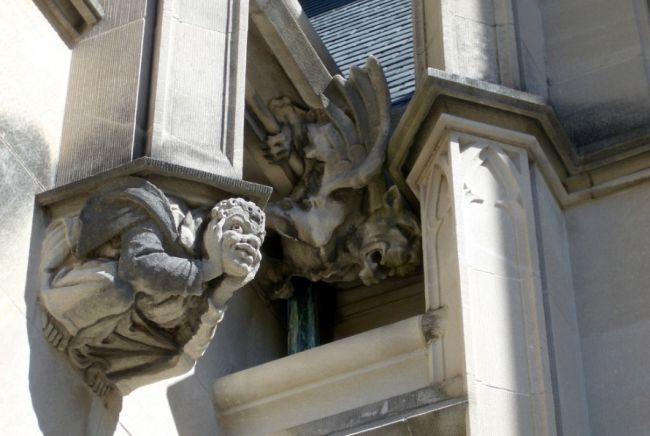
Gothic architecture is characterized by stained-glass windows, flying buttresses, high apexes, the Gothic arc or sharp arc as well as Gothic Gargoyles. Gothic Design is the term used to explain the style of style which were used between 1200 ADVERTISEMENT to 1500 ADVERTISEMENT. The various sorts of English Gothic Style styles are divided right into 3 distinctive stages:.
- Early English Gothic Style (also called Lancet) – 1200 to 1300.
- Embellished Gothic Design – 1300 to 1400.
- Vertical Gothic Design – 1400 to 1500.
Definition and Beginning of Gargoyles and also Grotesques
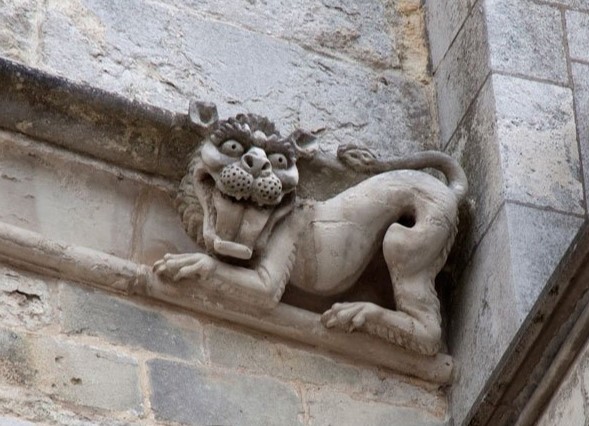
Gargoyles entered gothic design in the early 13th century and are specified as “a waterspout, predicting from an upper component of a structure or a roof gutter to throw water clear of walls or foundations.” The origins of the word ‘gargoyle’ are originated from the old French word ‘gargouille’ suggesting throat. In Architectural terms only the animal functioning as real water spout is called a Gargoyle, or else is it called a Grotesque. A monstrous could function entirely as decor.
Summary of Gargoyle – Just what do Gargoyles represent?
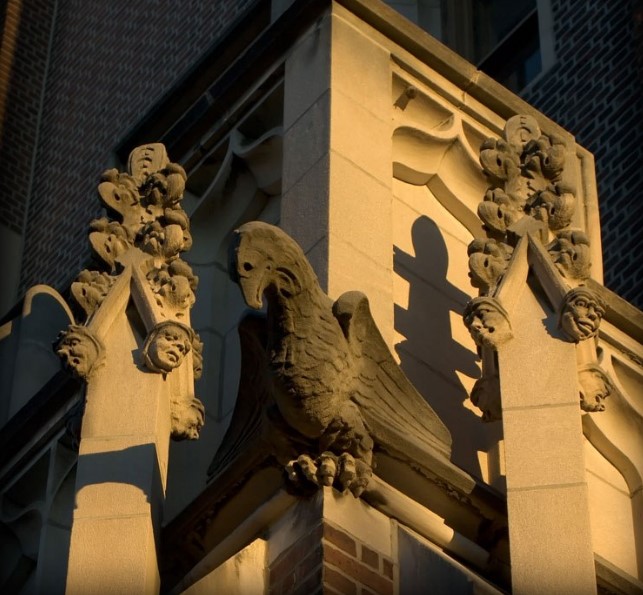
Gargoyles were generally carved in the form of a monstrous face, number or frightening creature projecting from a roof covering rain gutter. Gargoyles were painted and also some were also gilded. Gargoyles might portrayed any number of grotesque images consisting of:.
- Unsightly human faces.
- Mythological creatures.
- Fictional animals.
- Gargoyles integrating a number of pets are also described as chimeras.
The materials utilized for the earliest Gargoyles were constructed from wood and even terracotta yet early Medieval Gothic gargoyles were made of stone. Later gargoyles, especially in churches, were mostly limestone and also marble, although steels such as lead were also used in fashioning some gargoyles. Stone gargoyles were sculpted on the ground and after that put into area when the structure was virtually at the factor of completion.
Stone Gargoyles in Medieval Design
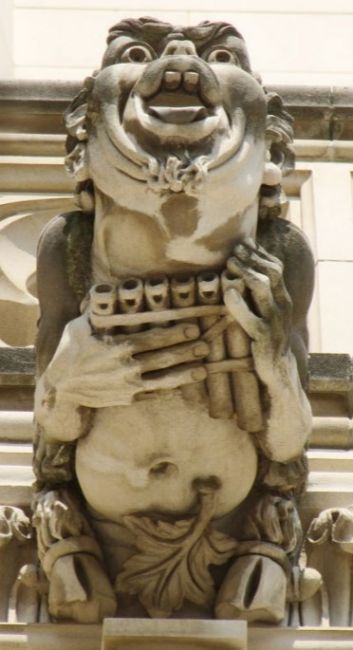
Gargoyles are a fascinating aspect of Medieval Style. These frightening, monstrous sculptures are usually related to Medieval Churches and Cathedrals yet they were likewise utilized to excellent effect in English Gothic castles. Gargoyles are frightening and daunting sculptures – ideal for the likes of great lords who developed fancy fortresses and castles in order to crush and also daunt the aboriginal populace. Nonetheless, whilst gargoyles were consisted of in the building of several middle ages buildings, they appear to be most widespread on churches.
Just what is the function of Gargoyles?
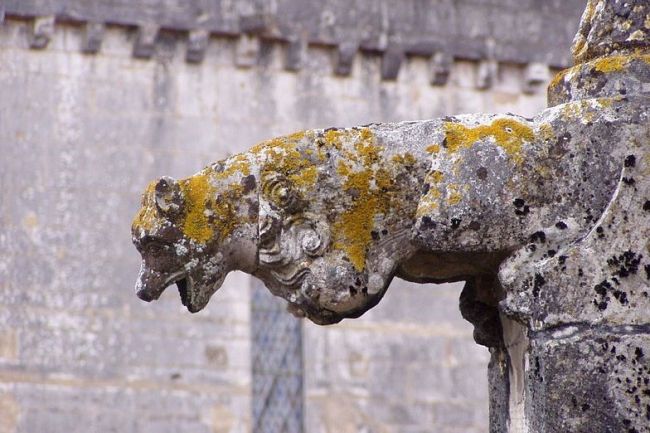
Just what is the function of Gargoyles? The first is an useful purpose – gargoyles offered a technique of drainage which secured the stones and the mortar of churches, sanctuaries and castles from disintegration. The variety of Gargoyles added to structures countlessed since splitting the circulation of water reduced prospective water damage. The second function of gargoyles was as ‘guardians’ of the structures through abstract symbols developed to stand for, and to prevent bad.
Exactly what do Gargoyles represent?
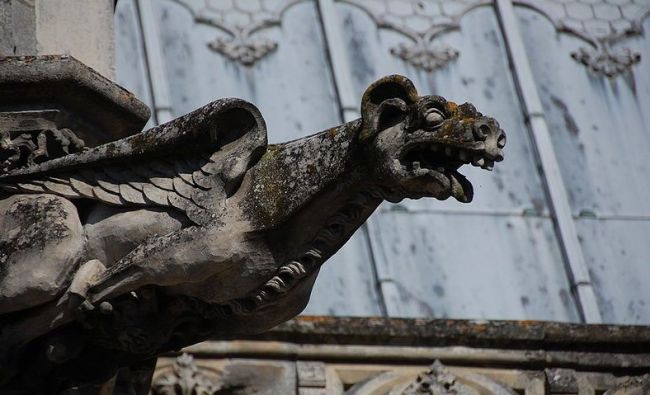
Just what do Gargoyles stand for? Gargoyles all have a common style, they are carved with big wide-open mouths. Whilst this was a functional, functional and also required demand of gargoyles animals and images with mouths broad open are symbolic of feeding on titans. And also lets be honest, exactly how can Medieval rock masons make anything look gorgeous when it needs to be presented with a big wide-open mouth!
Gargoyles History – Church Gargoyles; a representation of hell?

Gargoyles History dates back to antiquity. Gargoyles can be discovered in Ancient Egyptian, Ancient Roman and also Old Greek design although they are most frequently associated with Medieval Gothic architecture. Ancient history, myths, tales and pagan religions abound with stories of frightening and amazing animals. Creatures that fired the imagination. Creatures you would only ever satisfy in your worst nightmares. Maybe the Middle ages church wanted to convey a terrifying perception of heck as well as enforce that there was security as well as sacredness inside the church. The adversary would certainly be a most unacceptable, and entirely unorthodox, picture to permit on a church – great gargoyles, would, nonetheless have a comparable, scary emotional result. Rock masons had free option of their gargoyles need to show or appear like. It is an interesting reality that there is no 2 gargoyles which are specifically the very same!
Gargoyles and Grotesques Around the World
Originally posted 2020-01-08 01:36:25.


